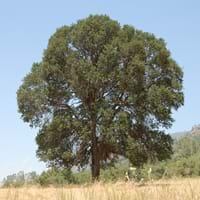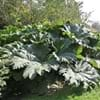Life Span
Perennial
Perennial
Origin
Hybrid origin
United States, California
Types
Victoria Rhubarb
Colorado Red Rhubarb
Turkish Rhubarb
Not Available
Number of Varieties
Not Available
Habitat
gardens, Grassland, Humid climates, Tropical regions, Urban areas
Woodland Garden Canopy
USDA Hardiness Zone
5-8
6-9
Sunset Zone
2b, 3a, 3b, 4, 5, 6, 7, 14, 15, 16, 17
3a, 3b, 4, 5, 6, 7, 8, 9, 10, 11, 14, 15, 16, 17, 18, 19, 20, 21, 22, 23, 24
Habit
Clump-Forming
Spreading
Flower Color
Light Pink
Red, Yellow green
Flower Color Modifier
Not Available
Bicolor
Fruit Color
Burgundy
Not Available
Leaf Color in Spring
Green, Dark Red
Green, Blue Green
Leaf Color in Summer
Green, Dark Red
Green, Blue Green
Leaf Color in Fall
Green, Dark Red
Yellow, Orange, Pink
Leaf Color in Winter
Light Green
Not Available
Leaf Shape
Compound
Irregular
Plant Season
Spring, Summer, Fall
Spring, Summer, Fall, Winter
Sunlight
Full Sun, Partial Sun
Full Sun, Partial Sun
Type of Soil
Clay, Loam
Not Available
The pH of Soil
Acidic, Neutral, Alkaline
Not Available
Soil Drainage
Average
Not Available
Bloom Time
Summer, Late Summer
Spring
Tolerances
Drought
Drought
Where to Plant?
Ground
Ground
How to Plant?
Stem Planting
Seedlings
Plant Maintenance
Medium
Medium
Watering Requirements
Do Not over Water, Requires regular watering, Use Mulches to help prevent water loss during hot and windy weather, Water Deeply
Average Water Needs
In Summer
Lots of watering
Lots of watering
In Spring
Moderate
Moderate
In Winter
Average Water
Average Water
Soil pH
Acidic, Neutral, Alkaline
Not Available
Soil Type
Clay, Loam
Not Available
Soil Drainage Capacity
Average
Not Available
Sun Exposure
Full Sun, Partial Sun
Full Sun, Partial Sun
Pruning
Remove damaged leaves, Remove dead branches, Remove dead leaves
Remove damaged leaves, Remove dead branches, Remove dead leaves, Remove dead or diseased plant parts
Fertilizers
All-Purpose Liquid Fertilizer
All-Purpose Liquid Fertilizer
Pests and Diseases
Red blotch
Red blotch
Plant Tolerance
Drought
Drought
Flowers
Showy
Insignificant
Flower Petal Number
Not Available
Not Available
Foliage Texture
Coarse
Medium
Foliage Sheen
Glossy
Not Available
Attracts
Not Available
Birds
Allergy
Skin irritation
Pollen
Aesthetic Uses
Showy Purposes
Borders
Beauty Benefits
Not Available
Not Available
Environmental Uses
Air purification
Air purification, Shadow Tree, soil erosion prevension on hill slopes, Wildlife, Windbreak
Medicinal Uses
Not Available
Astringent, Diarrhea, Dysentry, Haemorrhages, Poultice, Sore Eyes, Sore throat
Part of Plant Used
Whole plant
Leaves, Seeds, Wood
Other Uses
Culinary use, Used as Ornamental plant
Adhesive, Basketary, Buttons, Repellent, Tannin, Used as fuel, Used for woodware
Used As Indoor Plant
No
No
Used As Outdoor Plant
Yes
Yes
Garden Design
Feature Plant, Mixed Border
Feature Plant, Shade Trees, Street Trees
Botanical Name
RHEUM 'Ace of Hearts'
QUERCUS douglasii
Common Name
Ace of Hearts Ornamental Rhubarb, Ornamental Rhubarb
Blue Oak
In Hindi
सजावटी प्रकार का फल
Blue Oak Tree
In German
Ornamental Rhabarber
Blaue Eiche
In French
rhubarbe ornementale
Bleu Oak Tree
In Spanish
Ornamental de ruibarbo
Azul del árbol de roble
In Greek
καλλωπιστικά Ραβέντι
Μπλε Oak Tree
In Portuguese
ornamental ruibarbo
Carvalho azul
In Polish
ozdobne Rabarbar
Niebieski Oak Tree
In Latin
decentius Rhubarb
Blue quercum ligno
Phylum
Tracheophyta
Magnoliophyta
Class
Not Available
Magnoliopsida
Order
Caryophyllales
Fagales
Family
Polygonaceae
Fagaceae
Clade
Angiosperms, Core eudicots, Eudicots
Angiosperms, Eudicots, Rosids
Tribe
Not Available
Not Available
Subfamily
Not Available
Not Available
Number of Species
Not Available
Importance of Ornamental Rhubarb and Blue Oak
Want to have the most appropriate plant for your garden? You might want to know the importance of Ornamental Rhubarb and Blue Oak. Basically, these two plants vary in many aspects. Compare Ornamental Rhubarb and Blue Oak as they differ in many characteristics such as their life, care, benefits, facts, etc. Every gardener must at least have the slightest clue about the plants he wants to plant in his garden. Compare their benefits, which differ in many ways like facts and uses. The medicinal use of Ornamental Rhubarb is Not Available whereas of Blue Oak is Astringent, Diarrhea, Dysentry, Haemorrhages, Poultice, Sore Eyes and Sore throat. Ornamental Rhubarb has beauty benefits as follows: Not Available while Blue Oak has beauty benefits as follows: Not Available.
Compare Facts of Ornamental Rhubarb vs Blue Oak
How to choose the best garden plant for your garden depending upon its facts? Here garden plant comparison will help you to solve this query. Compare the facts of Ornamental Rhubarb vs Blue Oak and know which one to choose. As garden plants have benefits and other uses, allergy is also a major drawback of plants for some people. Allergic reactions of Ornamental Rhubarb are Skin irritation whereas of Blue Oak have Pollen respectively. Having a fruit bearing plant in your garden can be a plus point of your garden. Ornamental Rhubarb has showy fruits and Blue Oak has showy fruits. Also Ornamental Rhubarb is not flowering and Blue Oak is not flowering . You can compare Ornamental Rhubarb and Blue Oak facts and facts of other plants too.





